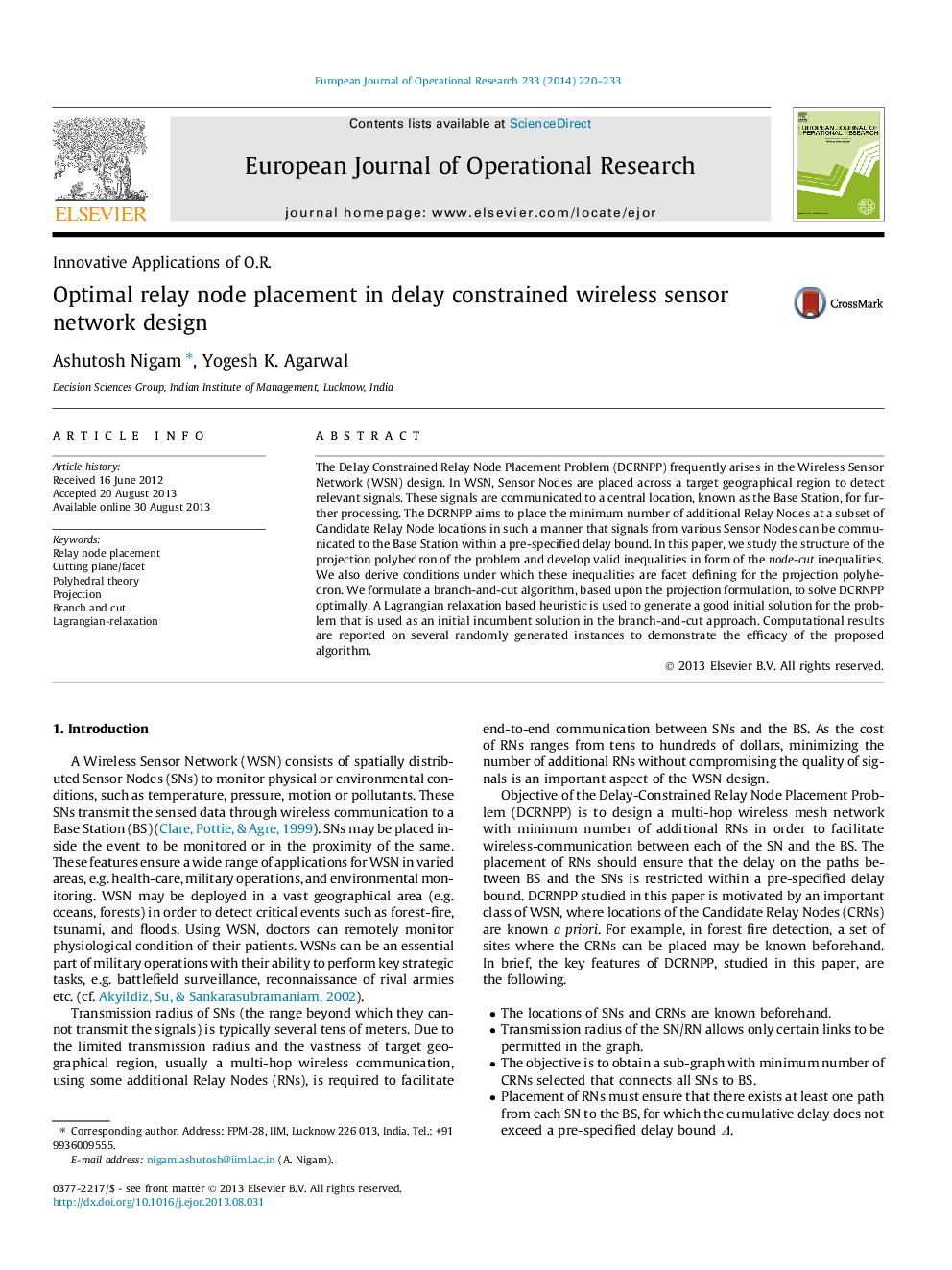| Article ID | Journal | Published Year | Pages | File Type |
|---|---|---|---|---|
| 479853 | European Journal of Operational Research | 2014 | 14 Pages |
•Examined the relay node placement problem in delay-constrained wireless sensor networks.•Devised a branch-and-cut based algorithm to solve problem optimally in the projection space.•Established node cut inequalities as the facet defining inequalities for the projection polytope.•The projection algorithm substantially outperforms the column generation approach to find a lower-bound.•Proposed a new Lagrangian relaxation based heuristic.
The Delay Constrained Relay Node Placement Problem (DCRNPP) frequently arises in the Wireless Sensor Network (WSN) design. In WSN, Sensor Nodes are placed across a target geographical region to detect relevant signals. These signals are communicated to a central location, known as the Base Station, for further processing. The DCRNPP aims to place the minimum number of additional Relay Nodes at a subset of Candidate Relay Node locations in such a manner that signals from various Sensor Nodes can be communicated to the Base Station within a pre-specified delay bound. In this paper, we study the structure of the projection polyhedron of the problem and develop valid inequalities in form of the node-cut inequalities. We also derive conditions under which these inequalities are facet defining for the projection polyhedron. We formulate a branch-and-cut algorithm, based upon the projection formulation, to solve DCRNPP optimally. A Lagrangian relaxation based heuristic is used to generate a good initial solution for the problem that is used as an initial incumbent solution in the branch-and-cut approach. Computational results are reported on several randomly generated instances to demonstrate the efficacy of the proposed algorithm.
